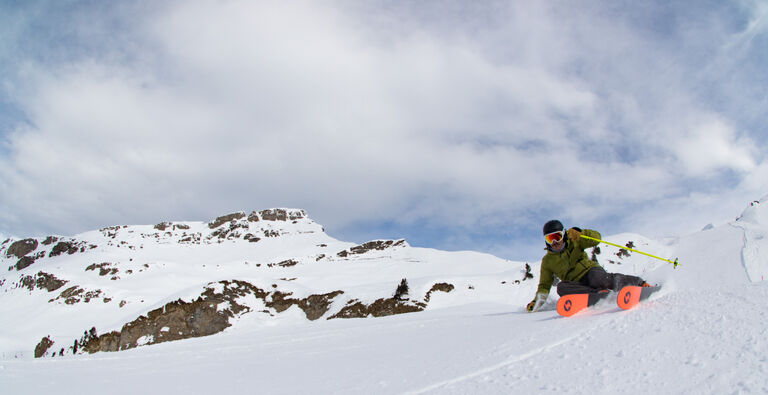
Christy Sports – Ski Buying Guide
How to Choose the Right Bindings for your Skis
Choosing ski bindings can sometimes be an afterthought when purchasing new skis, but they are a critical piece of equipment. Having the right bindings to ensure compatibility with your skis and boots is crucial to an enjoyable day out on the mountain. There are four main components in choosing the correct ski binding: the type of skiing the binding will be used for, the brake width, boot compatibility, and the DIN range. Follow this guide to select the right binding for your needs!
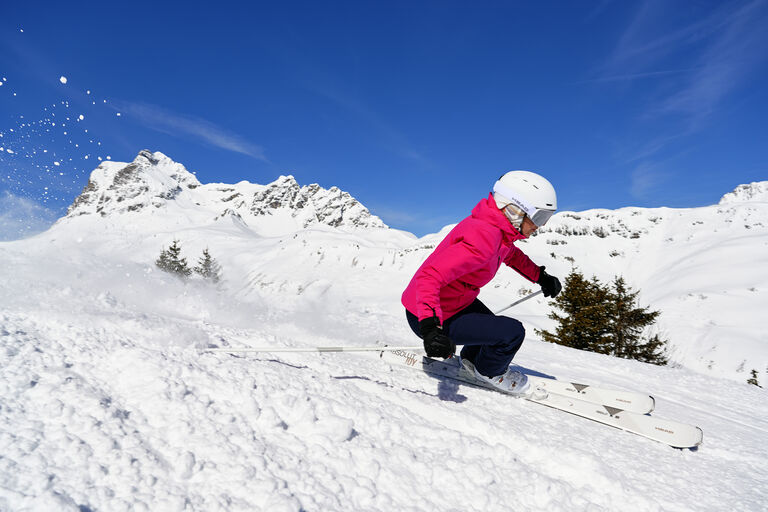
TYPES OF BINDINGS
Three binding types: Alpine, Tech (AT), Hybrid.
Alpine bindings:
- Most common, for downhill only.
- Safe, durable, reliable, simple.
- Examples: Marker Griffon, Salomon Strive, Tyrolia Attack, Look Pivot
Tech bindings (alpine touring):
- Use toe/heel pins instead of step-in.
- Heel releases for uphill pivoting.
- Lightweight, great for touring.
- Less elastic travel + releasability than alpine.
- Require boots with tech inserts.
- Examples: Marker Cruise, Dynafit Ridge
Hybrid bindings:
- Combine touring + downhill features.
- Touring capability like tech, but heavier/more complex.
- Elastic travel + safety of alpine.
- Ideal for skiers wanting one setup for resort + backcountry.
- Examples: Salomon Shift, Marker Duke PT
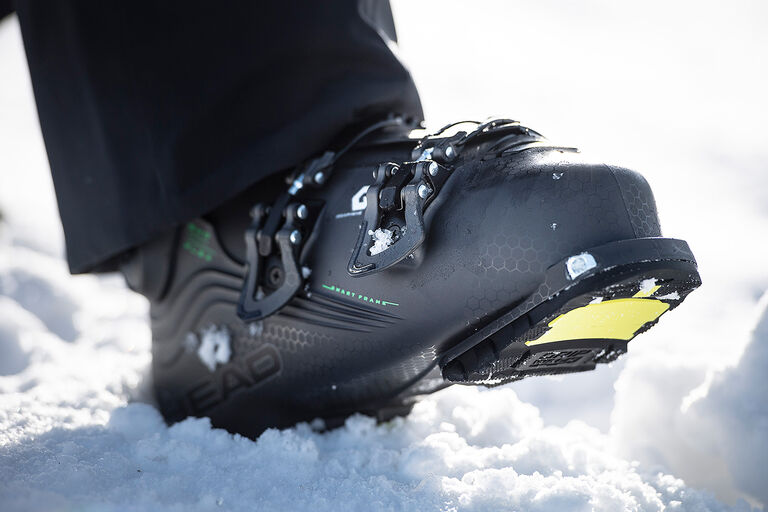
SKI BOOT COMPATIBILITY
Boot–binding compatibility is essential.
Standards: Defined by ISO (International Standards Organization) for boot sole shapes/dimensions.
Common boot soles:
- ISO 5355 (flat plastic sole) → works with all alpine bindings.
- GripWalk soles → require GripWalk-compatible bindings.
- ISO 9523 touring soles → work with multi-norm certified (MNC) bindings.
MNC bindings: Compatible with ISO 5355, GripWalk, and ISO 9523.
Tip: Compatibility can be confusing—consult a certified ski binding technician.*
Safety: All mounts/remounts/adjustments should be done by certified techs.
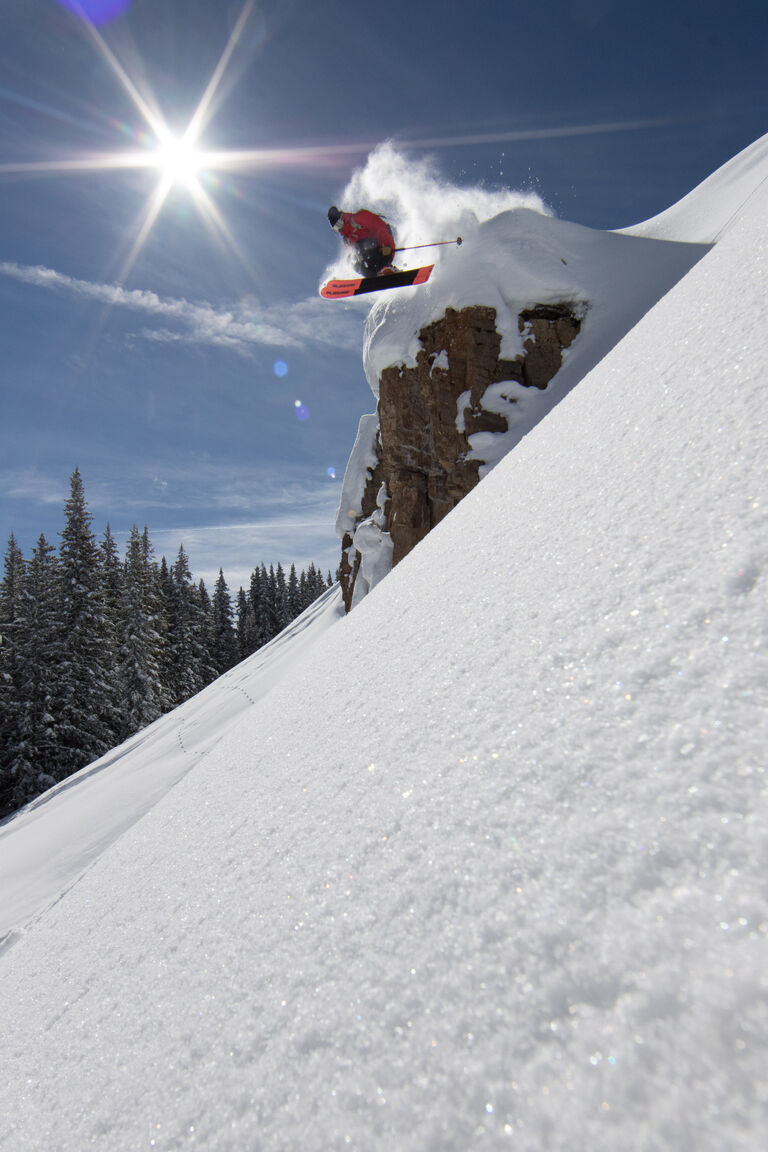
BRAKE WIDTH
Ski brake: Metal arms on heel of binding that stop skis from sliding away.
Sizing: Brake must be wide enough to extend past ski waist width.
- Example: 90mm ski → brake at least 90mm wide.
Avoid oversizing: Brakes >10mm wider than ski waist can be hazardous.
Replaceable: Some brakes can be swapped for different sizes.
Tip: If unsure, consult an expert at a Christy Sports location or chat with customer service.
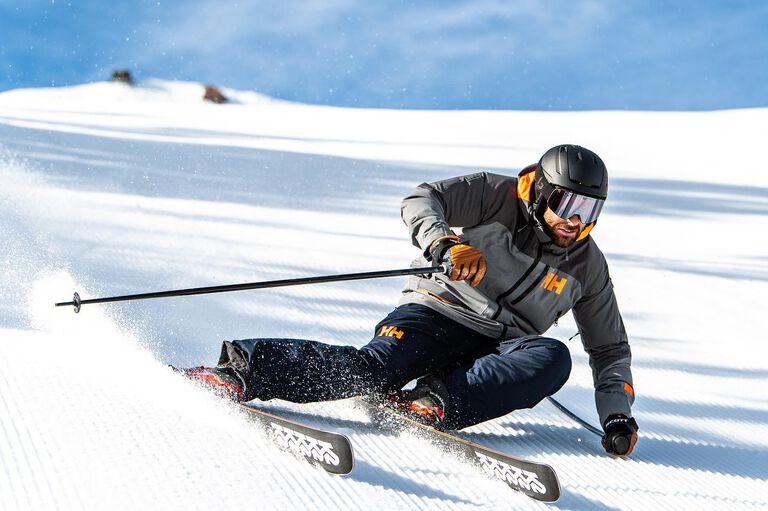
DIN RANGE
DIN scale: Standardized range (0.75–18) indicating ski binding release settings.
Meaning: Higher DIN number = more force required for boot to release.
Factors determining DIN: Height, weight, age, skier type (1–3+), boot sole length.
Binding ranges: Must ensure your DIN setting falls within the binding’s range.
- Most skiers fit within the range of bindings topping out at DIN 11–13.
Setup: Certified binding technician will set DIN during mounting/adjustment.
Tip: If unsure, consult an expert at a Christy Sports location or chat with customer service.


